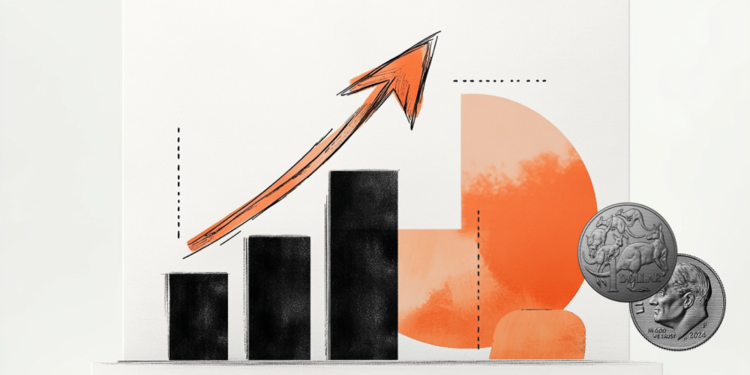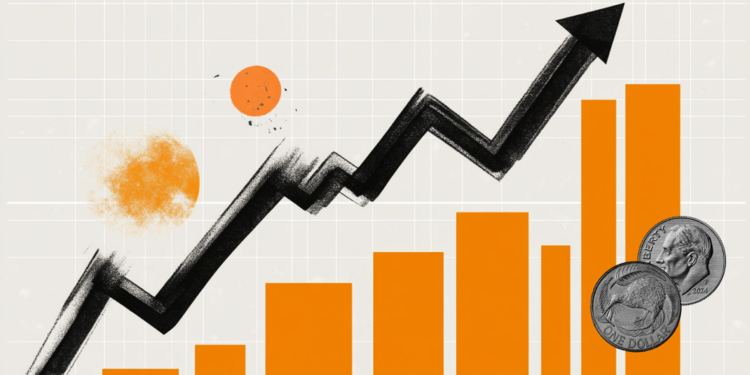- GBP/USD consolidates previous day’s strong move to one-year high.
- Rebounding US bond yields revive demand for USD and limit the pair’s gains.
- Lowered expectations for a BoE rate cut in August should help limit any significant decline.
The GBP/USD pair is hovering between tepid gains and mild losses around the 1.2900 mark during the Asian session on Friday and remains well within range of a one-year high touched the previous day.
The US Dollar (USD) is attracting some buyers following a good rebound in US Treasury bond yields and moving away from a near three-month low touched the previous day, which, in turn, is acting as a headwind for the GBP/USD pair. Meanwhile, softer US consumer inflation figures released on Thursday raised market expectations of an imminent start of the Federal Reserve (Fed) rate-cutting cycle in September. This could limit any significant rise in US bond yields. In addition to this, the prevailing risk-on environment could restrain traders from placing aggressive bullish positions around the safe-haven Dollar.
The British Pound (GBP), on the other hand, continues to draw support from Thursday’s data which showed that the British economy grew faster than expected, by 0.4% in May. This adds to recent comments from Bank of England (BoE) policymakers and dashed hopes for a rate cut in August. In fact, BoE MPC member Catherine Mann said on Wednesday that until there is a slowdown in services prices, she is not in favour of cutting interest rates. Moreover, BoE Chief Economist Huw Pill noted that there is still work to be done before the lingering component of domestic inflation disappears.
The aforementioned fundamental backdrop seems to tilt firmly in favour of the bulls and suggests that the path of least resistance for the GBP/USD pair is to the upside. Therefore, any significant correction could still be seen as a buying opportunity and is more likely to remain limited. Nevertheless, spot prices remain on track to end in the green for the third consecutive week. Traders now look forward to the release of the US Producer Price Index (PPI) and the University of Michigan Consumer Sentiment survey, due later during the North American session, for short-term opportunities on the final day of the week.
The British Pound FAQs
The Pound Sterling (GBP) is the oldest currency in the world (886 AD) and the official currency of the United Kingdom. It is the fourth most traded currency unit in the world, accounting for 12% of all transactions and an average of $630 billion a day, as of 2022.
Its key currency pairs are GBP/USD, also known as the “Cable,” which accounts for 11% of the forex market, GBP/JPY, or the “Dragon” as it is known to traders (3%), and EUR/GBP (2%). The British Pound is issued by the Bank of England (BoE).
The most important factor influencing the value of the British Pound is the monetary policy decided by the Bank of England. The Bank of England bases its decisions on achieving its main objective of “price stability”, i.e. a stable inflation rate of around 2%. Its main tool for achieving this is the adjustment of interest rates.
When inflation is too high, the Bank of England tries to contain it by raising interest rates, making credit more expensive for individuals and businesses. This is generally positive for the GBP, as higher interest rates make the UK a more attractive place for global investors to park their money.
When inflation is too low, it is a sign that economic growth is slowing. In this scenario, the BoE will consider lowering interest rates to make credit cheaper, so that companies borrow more to invest in growth-generating projects.
The data released gauges the health of the economy and can influence the value of the Pound. Indicators such as GDP, manufacturing and services PMIs, and employment can influence the direction of the Pound.
A strong economy is good for the British Pound. Not only does it attract more foreign investment, but it may encourage the Bank of England to raise interest rates, which will directly strengthen the British Pound. Conversely, if economic data is weak, the British Pound is likely to fall.
Another significant indicator for the pound is the trade balance. This indicator measures the difference between what a country earns from its exports and what it spends on imports during a given period.
If a country produces highly sought-after exports, its currency will benefit exclusively from the additional demand created by foreign buyers who wish to purchase these goods. Therefore, a positive net trade balance strengthens a currency and vice versa for a negative balance.
Source: Fx Street
I am Joshua Winder, a senior-level journalist and editor at World Stock Market. I specialize in covering news related to the stock market and economic trends. With more than 8 years of experience in this field, I have become an expert in financial reporting.







